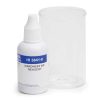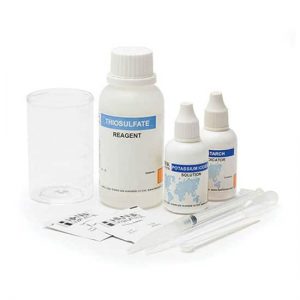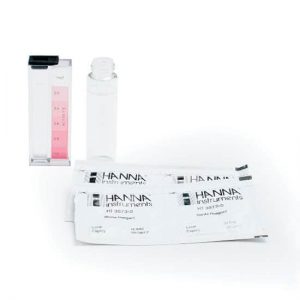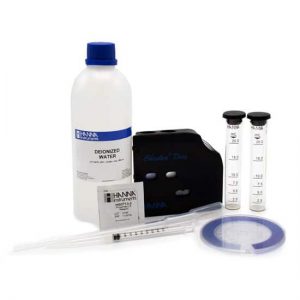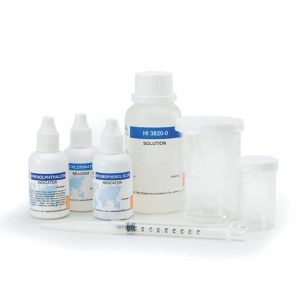HI38023 เป็นชุดทดสอบสำหรับตรวจสอบระดับคลอรีนรวมในน้ำใช้วิธีการ Titration ในการวัดคลอรีนรวมมีย่านการทดสอบระหว่าง 10-200 mg/L (ppm) ชุดทดสอบคลอรีน HI38023 มาพร้อมกับอุปการณ์การทดสอบที่สมบูรณ์ประกอบด้วยชุดของน้ำยาและอุปกรณ์ที่จำเป็นในการดำเนินการทดสอบ สามารถทดสอบได้ประมาณ 100 การทดสอบ
Specification HI38023
| SKU | HI38023 |
|---|---|
| Product Name | Total Chlorine Extended Range Test Kit |
| Total Chlorine Measurement Type | titration |
| Total Chlorine Range | 10 to 200 mg/L (ppm) |
| Total Chlorine Resolution | 10 mg/L (ppm) |
| Total Chlorine Number of Tests | 100 |
| Chlorine Method | iodometric |
| Weight | 547 g (19.3 oz.) |
| Dimensions | 235 x 175 x 115 mm (9.2 x 6.9 x 4.5") |
| Ordering Information | HI38023 test kit comes with 30 mL potassium iodide solution, sulfamic reagent (100 packets), 25 mL starch indicator, 100 mL thiosulfate reagent, 50 mL calibrated vessel, 1 mL syringe with tip, 1 mL plastic pipette, and spoon. |
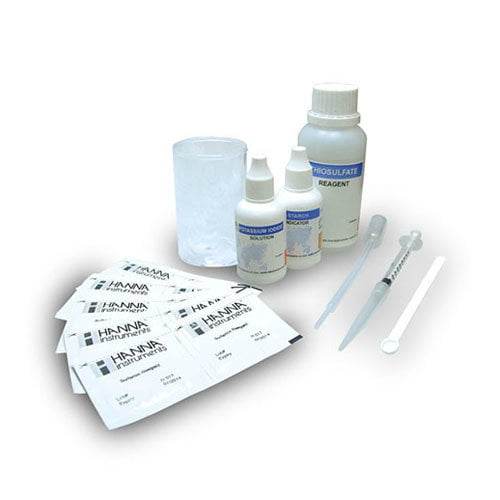
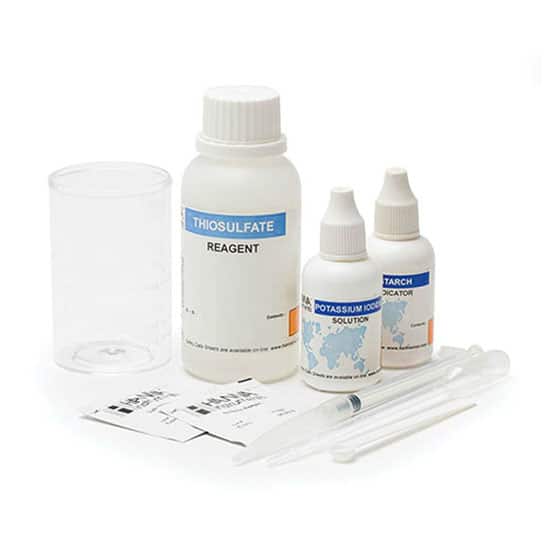
PDF Catalog
The HI38023 is a titration-based chemical test kit that determines the total chlorine concentration within a 10 to 200 mg/L (ppm) range.
Supplied with all of the necessary reagents and equipment to perform the analysis. The test kit contains enough reagents for perform approximately 100 tests. An iodometric titration method is used.
The water sample is treated with potassium iodide and strongly acidified with acid. The amount of iodide generated is equivalent to the concentration of chlorine in the sample; the concentration of iodine is calculated by titration with thiosulfate ions that reduce iodine ions back to iodide ions.
Features
Complete setup
- All required materials are included with the test kit, such as the glass vials, plastic pipette, reagent packets, and Checker® disc.
High resolution
- Readings from 10 to 200 mg/L are determined to 10 mg/L resolution.
Replacement reagents available
- There is no need to buy a new kit when reagents are exhausted. The HI38023-100 reagent set can be ordered to replace the reagents supplied with the kit. This reagent set comes with 1 (30 mL) dropper bottle potassium iodide solution, 100 packets sulfamic reagent, 1 (25 mL) dropper bottle starch indicator, and 100 mL bottle thiosulfate reagent.
Significance of Use
The chlorination of water supplies and polluted waters is used mainly to destroy or deactivate disease-producing microorganisms. Chlorine also serves to improve the quality of drinking waters, as it reacts with ammonia, iron, manganese, sulfide, and some organic substances.
Nevertheless, high amounts of chlorine will produce adverse effects like the formation of compounds which are potentially carcinogenic (e.g. chloroform) or harmful to aquatic life (e.g. chloramines). It remains essential to control the amount of added chlorine in order to fulfill the primary purpose of disinfecting while also minimizing any adverse effects.


